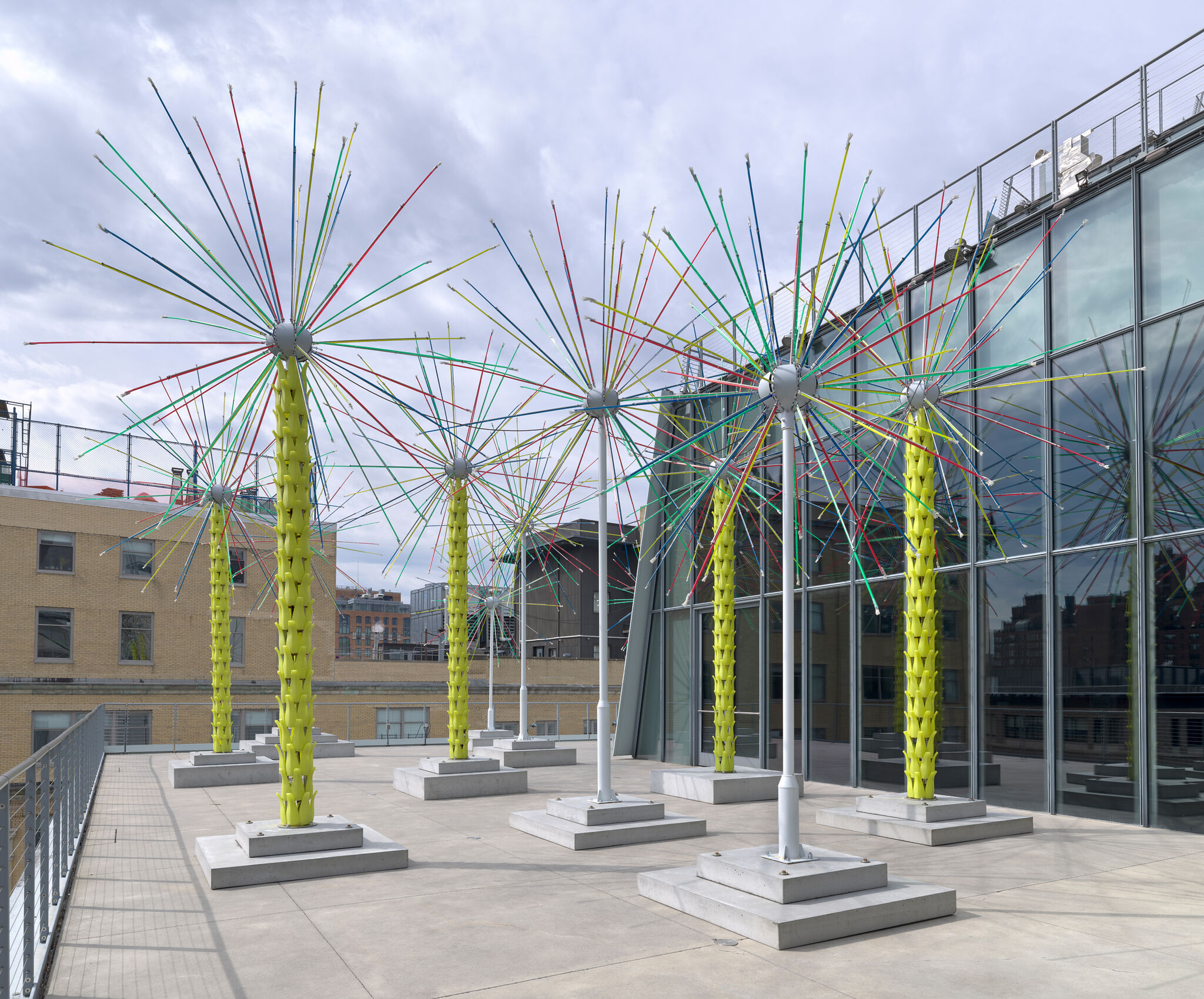Whitney Biennial 2022: Quiet as It’s Kept | Art & Artists
Apr 6–Oct 16, 2022
Whitney Biennial 2022: Quiet as It’s Kept | Art & Artists
Alia Farid
21
Floor 6 Terrace
Born 1985 in Kuwait City, Kuwait
Lives in San Juan, PR, and Kuwait City, Kuwait
Alia Farid fabricated this installation of artificial palm trees specifically for this terrace. Farid, who is from Kuwait and Puerto Rico, makes work that explores “the complex and fragmented histories of the places (she is) from.” The palm tree holds a specific resonance for the artist, whose paternal side of the family hails from southern Iraq and Kuwait. Her grandmother is from Basra, a city formerly renowned for its date palms and lush vegetation. Basra’s palm groves were decimated during the Iran-Iraq War (1980–88) to deprive enemies and dissidents of cover. These artificial palm trees, Farid has said, “are low-grade stand-ins for the palm groves that once covered large areas of the south. . . . The installation is part of a group of works that probe how nature and landscapes are weaponized, harnessed, and destroyed by governments and extractive industries.”
Palm Orchard, 2022
-
0:00
Alia Farid, Palm Orchard
0:00
Narrator: Alia Farid lives and works in Kuwait and Puerto Rico. The work she made for the Biennial addresses the destruction of the ecology of south Iraq, the displacement of people, and the struggle for sovereignty. The daughter of two architects, Farid has an interest in the built environment and works in many different media, including film, sculpture, and installations.
Alia Farid: I’m interested in this idea of how nature or the things that had been sort of desecrated in the landscape reappear now in this kind of tokenistic form. The palm groves in Southern Iraq that were destroyed, how they reappear in the landscape, through these artificial trees. I’m also interested in how nature is seen as an accomplice to resistance in Southern Iraq. During Saddam Hussein’s regime, a lot of the Shiite rebels or people who were against Saddam Hussein’s rule, hid in the marshes. And that’s precisely why he sent orders to drain the marshlands.

